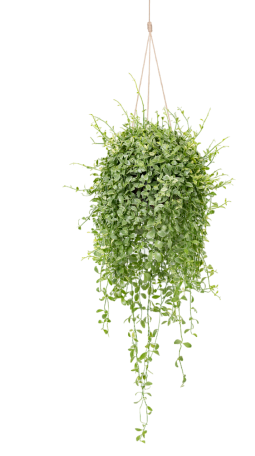Why is my HVAC Filter getting dirty so quick?

We as humans don’t tend to notice gradual changes. It’s the “whoa, I’ve never seen that before!” moments that really get our wheels spinning. We’ve had a number of customers ask this question recently and thought we would share some insights.
First of all, the dirt or discoloration on your HVAC filter is primarily related to how much you’re using your HVAC system. You might be steadily creating all sorts of air pollution in your home (we’ll get to that in a minute), but if the fan in your system is not running, air is not being pulled through the filter. Then, when summer or winter comes, suddenly you are using the heating and air conditioning, which calls for the fan to run more often, and the filter gets dirtier, faster. Spring and fall seasons are more “comfortable”, so when the fan is on “AUTO”, it’s not running much.
NOW we’ll get to the nitty-gritty, the dark stuff that we might (unknowingly) be putting in the air! First of all, according to a professional furnace/gas inspector, it’s not possible to know for certain what black matter is on the filter, so calling it “soot” is premature unless it’s tested by a lab. Accordingly, we should call it “black particulate matter” or BPM. However, since most of us don’t have access to that kind of lab testing unless we call in such an expert, we can make some educated guesses from behavior/activities in the home and eliminate them!
-
Candles: According to the same expert, 83% of the time the BPM is from burning candles! Candles can turn your HVAC filter black or dark gray. The easiest way to explain this is that candles have MASS (not the Catholic kind, the kilogram kind). When you burn a candle, it doesn’t disappear into thin air, although technically you can’t see the wax anymore in the empty candle jar. The wax is burned, turning it into vapors and small particulates. HVAC techs know when you’re a heavy paraffin candle user because paraffin candles are composed of hydrocarbons, making your filters turn black from soot (particulates). Soy and beeswax candles produce less soot, but you are still releasing vapors and some particulates. If you don’t want to give up your candles, consider the following:
-
Switch to soy or beeswax candles. Here are some brands that do not use hydrocarbons: Natural Sloth, Fontana Candle Co., and Bluecorn Beeswax Company.
-
Make sure to keep the wick trimmed, because long wicks create more smoke. There are special wick-trimming scissors that make it easy to do!
-
Incense is even worse for air quality and filters than paraffin candles, so only burn incense in outdoor or porch spaces.
-
-
Air-fresheners may turn the filter more of a “yellow” and sometimes leave a discolored spot on your ceiling above the freshener! We recommend not to use the commercial “plug-ins” and “wax warmers”, because the ingredients, once again, are not healthy.
-
Vaping: Vaping is not good for your lungs or for your HVAC system. Some vapes are more “oily” than others, but HVAC techs have found that coils and machinery in the air handler and the ducts themselves become excessively dirty in homes where vapes are used. This is because propylene glycol and vegetable glycerin in the e-liquids are “sticky” vapors that, when they condense inside your HVAC unit, enable dust that gets by your filter to stick to it. These vapors also clog up a filter faster, often turning it dark gray or black. E-cigarettes are not particulate-free, either! Several indoor studies have reported high concentrations of PM2.5 resulting from e-cigs, which could reach up to 1,121 μg/m3, or ~45 times as high as the World Health Organization’s recommended 25 μg/m3 limit for 24-h outdoor concentrations. (Effects of Electronic Cigarettes on Indoor Air Quality and Health) Nicotine in the vape will also cause the filter to turn yellow/brown (but this may not be seen because of the dark particulates).
-
Cooking: Just like e-cig vapors, cooking oil vapors are sticky! If your return air grille is near the kitchen (even if you have a kitchen exhaust vent), there could be a lot of cooking oil vapors going into your HVAC. This is because most kitchen exhaust fans operate between 100-400 cfm (cubic feet per minute), but your air handler is pulling in more than 600 cfm in most cases! If you love to cook and the air handler return is near the kitchen, it’s best to a) turn off the air handler or set the thermostat outside the ambient range while you’re cooking so it won’t come on, and b) use the kitchen vent, or use an open window and a fan pointing out, to exhaust the fumes, VOCs and particulates. Searing meat at high temperatures and toasting bread are really bad for air quality!
-
Pets: Normally, pets like cats and dogs do not turn a filter “black”, but there can definitely be a difference in pet hair and dust/dander on the filters when adding a pet to the home. If your pet(s) are not properly house-trained (or litter boxes not emptied regularly), then the ammonia from their urine can cause corrosion of the HVAC evaporator coil, and also corrode flame sensors in furnaces (a very sensitive electronic part). Take care to change your HVAC filter more often if you notice a buildup of dust and pet hair, and change litter boxes regularly and keep litter boxes away from the HVAC returns to avoid corrosion issues.
-
Fireplaces: According to the above expert, it is uncommon but not impossible for a gas direct vent to make a lot of soot and even more rare for it to be released into the home. It’s very hard to diagnose without professional assistance. If you just started using a new gas, wood or any type of combustion heater and notice the filter getting exceptionally dirty in a short period of time, it’s best to call an inspector to make sure that the fuel is burning completely and exhaust fumes are being directed out the vent, not into the home. There can be major, dangerous problems when a combustion unit like a gas water heater is shut in a room with a return grill to your AC unit. This causes negative pressure and can draw combustion exhaust gas into your home’s air, creating a carbon monoxide hazard. Check out our article on negative pressure to learn how to avoid this.
-
Hobbies: Hobbies like 3D printing, laser engraving, electronics (soldering), yes all those fun hobbies using plastics, solvents, and/or high heat can definitely degrade your air quality and really, they need their own closed room. This video about measuring air quality in a 3D printer room shows that (minute 10:30) the enclosure of the printer did not help at all to contain PM2.5, raising it above any safe short- or long-term level. The artist also noted that ASA contains more particulates and BPA, that nasty industrial chemical that can disrupt the endocrine system. And, there was some region of the room emitting formaldehyde, most likely where he stored resins. In the end, he suggested several HEPA filters with carbon that effectively reduced the particulates to a minimal level and reduced VOC’s by 30%, to a safe level. Unless you have a separate ventilation system for the hobby area, these types of filters are a great alternative.
Keep sleuthing, checking and replacing your filters, especially because your lungs (and whole body) depend on it!
Photo by Kevin McCutcheon on Unsplash






